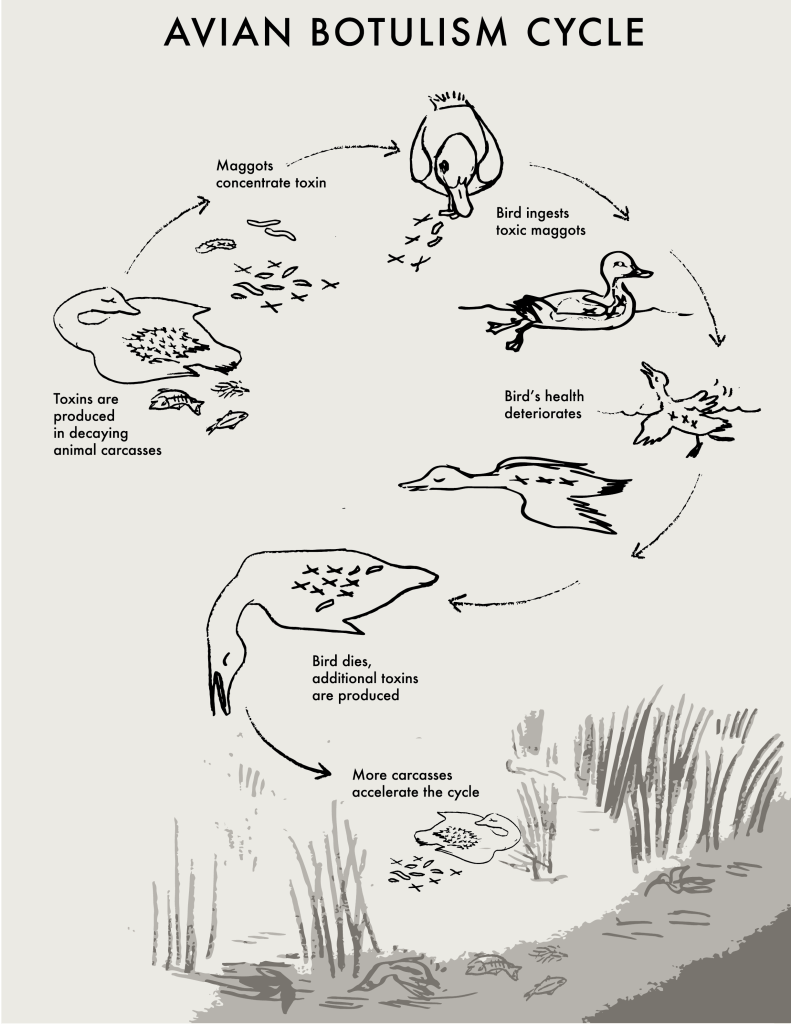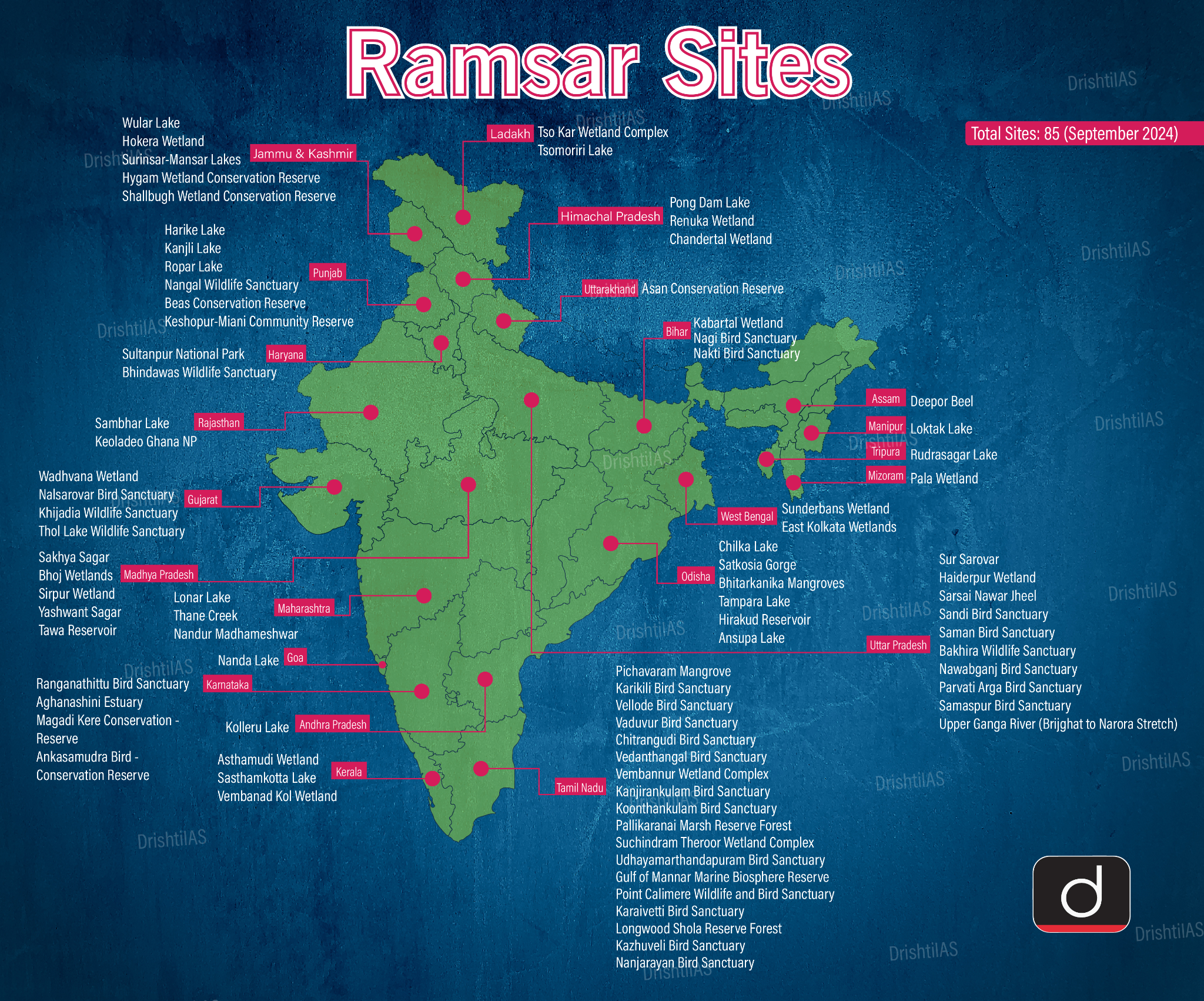Avian Botulism at Sambhar Lake | 22 Nov 2024
Why in News?
Recently, a mass death of migratory birds died at Sambhar Lake in Rajasthan, likely due to avian botulism. The outbreak is believed to be caused by high temperatures and reduced salinity in the lake.
What is Avian Botulism?
- Definition: Avian botulism is a neuromuscular disease caused by toxins produced by the bacterium Clostridium botulinum. The disease affects wild birds, primarily waterfowl and fish-eating birds, causing paralysis and death.
- Environmental Conditions: Avian botulism outbreaks are triggered by specific environmental factors, including:
- High water temperatures.
- Low oxygen levels in water.
- Stagnant or sub-optimal water conditions.
- Transmission: Botulism outbreaks occur when invertebrates or fish ingest the bacteria and die in poor water conditions. The bacteria multiply in the carcasses, producing toxins that affect waterfowl and fish-eating birds.
- Scavengers, including other birds and mammals, can also ingest the toxin from the carcasses.
- Symptoms in Birds: Muscle weakness, paralysis and difficulty flying or standing. Affected birds may lose the ability to hold their heads up.
- Disease Management: There is no treatment for this disease. Control of avian botulism is challenging due to the natural presence of Clostridium botulinum in the environment.
- However, removing and properly disposing of carcasses helps limit toxin spread. Water level management in smaller lakes can reduce outbreaks.
- Public Health Concerns: Clostridium botulinum has seven types (A-G), with types C and E affecting wild birds.
- Botulism in humans is usually caused by type A or B toxins from improperly canned food.
- Type C doesn't impact humans, but type E can be contracted from infected fish, though proper cooking can inactivate the toxin.
- Precautions, like wearing gloves and washing hands, should be taken when handling dead birds or fish to prevent contamination.
- Factors Triggering Botulism at Sambhar Lake: High temperatures in Jaipur (1-5.1°C above normal) in October, reduced salinity from freshwater inflow, and a lack of rainfall contributed to low oxygen levels in Sambhar Lake, creating ideal conditions for Clostridium botulinum growth.
Sambhar Lake
- Sambhar Lake, India’s largest saline wetland, is located in the Nagaur and Jaipur districts of Rajasthan, bordered by the Aravalli hills. It is the source of most of Rajasthan's salt production.
- It was designated a Ramsar site in 1990 due to its ecological significance.
- It attracts thousands of migratory birds, including flamingos, from November to February. During the monsoon, the lake comes alive with birds like coots, black-winged stilts, sandpipers, and redshanks.


